Pharaoh, in Ancient Egypt, was initially referred to as “Great House,” and a royal palace where the leaders resided. The word Pharaoh was eventually used to honor and respect the leaders or the Kings of ancient Egypt.
The reign of Pharaoh began in 3000 B.C. since then the Egyptians began honoring and respecting Pharaohs as the only mediator between the gods and the Egyptians.
Pharaoh, as the Egyptian Government, created laws, waged wars to extend their territory, made regulations, collected taxes, participated in religious formalities and sustained religious harmony, and had control over the land of Egypt.
Each Egyptian Pharaoh, both male, and female had a distinctive legacy where some were innovative architectural designers or cherished military leaders while others were intelligent diplomats.
Here is the list of the top 10 most Famous Ancient Egyptian Pharaohs with some details.
10. Cleopatra VII
Content
Reign: 51 – 30 BC
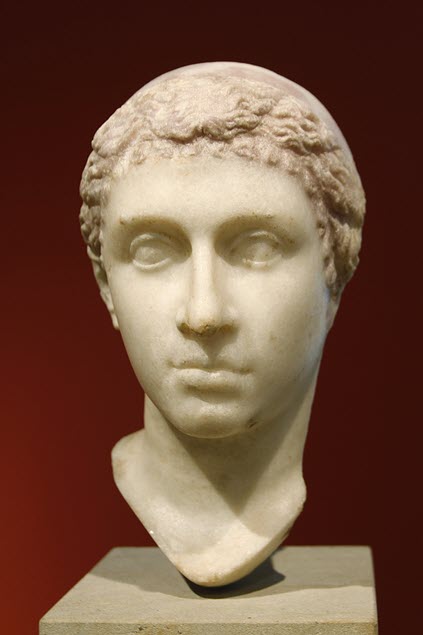
Source: Wikimedia Common
Cleopatra VII or Cleopatra Philopator was the last ruling Pharaoh of the Ptolemaic Dynasty. She was the daughter of Ptolemy XII (Auteles), a successor of Ptolemy I Soter.
She was an esteemed leader who successfully guided the poor Ptolemaic Dynasty of Egypt to peace and welfare. The Egyptian kingdom flourished during the reign of Cleopatra VII reign as foreign trading escalated and the economy enhanced.
Unfortunately, the development phase could not last long as she committed suicide when her brother challenged her ascension to the throne. The Ptolemaic Kingdom’s last ruling Pharaoh’s leadership and the Egyptian Empire ended in 30 B.C.
9. Khufu
Reign : 2589 – 2566 BC

Source: Wikimedia Common
Khufu was the second Pharaoh of the Fourth Dynasty and was known for the ‘Pyramid of Khufu’. The Pyramid of Khufu, built under the leadership of Pharaoh Khufu, was also known as the Great Pyramid of Giza. It is one of the most celebrated and the oldest of the Seven Wonders.
The pyramid stood at the height of 481 feet (147 meters) and was the tallest man-made structure for thousands of years.
The concept of pyramids being the monumental tombs for Kings and Queens of Egypt came from Khufu. However, Khufu’s identity remains inexplicable as the documents about the King were only written years after his death.
Only a few recorded documents remain about his reign. His sculptures were found in pieces, and the structures built during the time of Khufu’s reign are now lost.
8. Ramesses II
Reign: 1279 – 1213 BC

Source: Wikimedia Common
Ramesses II, the son of Seti I, was the most powerful and influential Pharaoh’ of the 19th Dynasty. He focused on fulfilling his goals to secure the Egyptian border and led several vicious battles against the Libyans, Nubians, Hittites, and Syrians.
The Battle of Kadesh remains the most significant battle that Ramesses fought against the Hittite Empire. Ramesses was considered the hero of the war who fought fearlessly and secured his lost territories.
This reflected his vision of a great empire and earned him the title “Ruler of rulers.” He gained respect as he made Egypt a mighty and dominant kingdom, during his 67 years of reign.
7. Tutankhamun
Reign: 1332–1323 BC
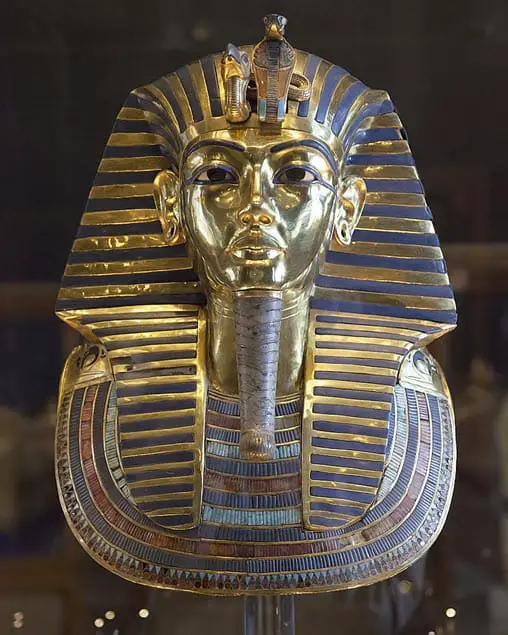
Source: Wikimedia Common
Tutankhamun (or Tutankhamen), the grandson of the great Pharaoh Amenhotep III, was declared a king at nine years old.
He was hardly known to the modern world as his inheritors essentially nullified his legacy. It was only after 1922 when the team led by Howard Carter, a British archaeologist, dug through a doorway and found the youth pharaoh’s tomb, sealed for over 3,200 years.
The tomb consisted of treasures and souvenirs which were placed to follow the emperor into the afterlife. It revealed several pieces of information about the royal life in ancient Egypt and rapidly made King Tut the most prominent Pharaoh in the world.
6. Akhenaten ‘The Heretic’
Reign: 1351 – 1334 BC
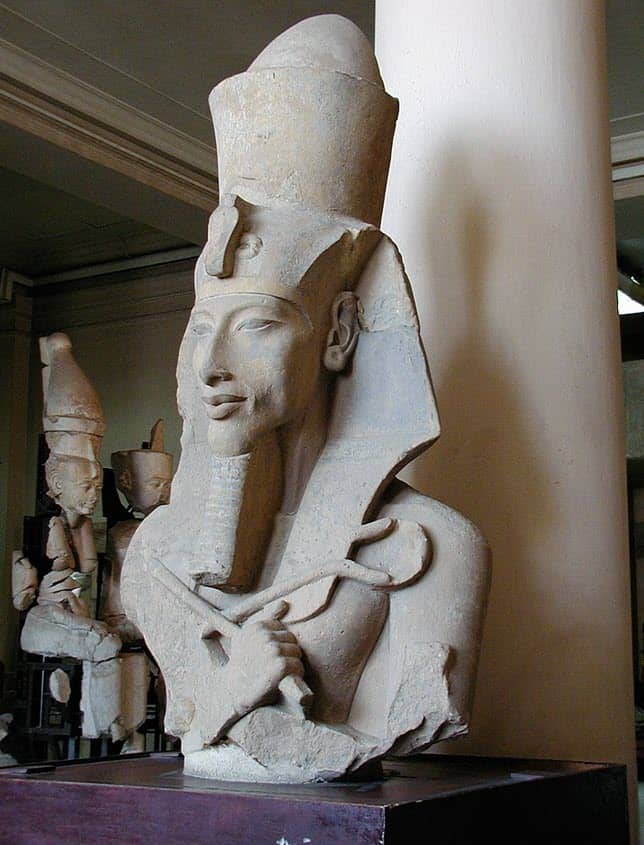
Source: Wikimedia Common
Akhenaten was never meant to be an emperor as he was the Pharaoh who dragged Egypt to the verge of bankruptcy. However, because of his philosophy and religious policies, he remains one of the most controversial rulers of the New Kingdom.
He wanted to implement his religious beliefs and reevaluate the way Egyptians worshipped. He ordered his fellow-subjects to worship only one God, the Aten (the Sun disc) out of all the Egyptian gods.
He was so optimistic about his ideas that he wanted to change Egypt’s polytheistic religion (many gods) to monotheism (one God). He then decided to relocate the nation’s capital to Amarna in Upper Egypt from Thebes.
And in 1346 BC, ‘Akhenaten’ was declared the new capital for worshipping the Aten. The people never received his absolute beliefs entirely because monotheism was against Egyptians’ beliefs, yet was reluctantly followed by the subjects.
His sculptures portrayed him with swollen lips, a long neck, a womanly face, and occasionally saggy breasts. This produced uncertainty amongst the historians regarding the gender of Akhenaten.
5. Amenhotep III
Reign: 1388 – 1351 BC
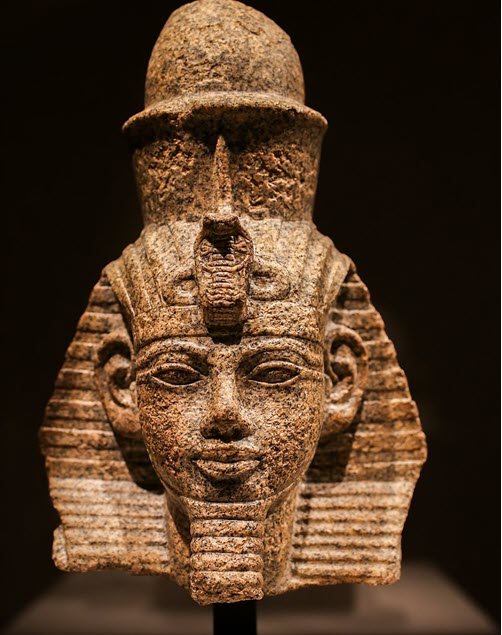
Source: Wikimedia Common
Amenhotep reigned over Egypt in the Eighteenth Dynasty. He was famous for Amenophis III, Nebma’atre, Amana-Hatpa, and Humhotep II, which connect to Amun, the God being happy.
He made his subjects happy by creating a peaceful environment and flourishing Egyptian culture, which allowed him to spend most of his time in the arts. Some of the most magnificent structures of Ancient Egypt including the Luxor Temple were constructed during his rule.
He was successful in expanding the land of Egypt as well as strengthening them through military campaigns. However, his successful reign only lasted for about 38 years.
4. Xerxes I
Reign: 486 – 465 BC

Source: Wikimedia Common
Xerxes I was the son of Darius, the Great fifth king of the Persian Dynasty. He ruled the 27th Dynasty and was famous for attempting to conquer Greece in 480 BC.
He captured the small city-states in Northern and central Greece. Despite the defense of Mainland Greece being led by Athens and Sparta, Xerxes I was victorious during the Battle of Thermopylae.
However, in the same year, he was defeated in the Battle of Salamis. People then tried to dethrone him. He was executed by his commander of the royal bodyguard forces during a palace plot in 465 B.C.
3. Thutmose III
Reign: 1479 – 1425 BC
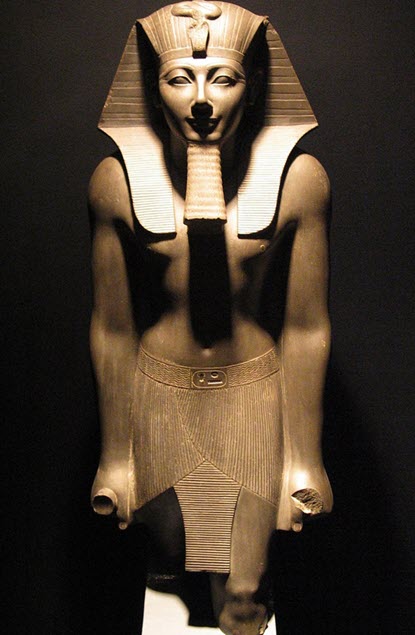
Source: Wikimedia Common
Thutmose III, the stepson of the earlier Pharaoh Hatshepsut, was the emperor of the 18th Dynasty. He was the one to extend the borders of Egypt to its furthest extent, capturing more territory than any pharaoh who ever lived.
Thutmose ruled Egypt for 34 years and, during the 23rd year of his reign, guided a successful military mission into Palestine and Syria. Famously known as the “Napolean of Egypt,” Thutmose III accomplished several achievements and military victories.
He expanded the southern border to the fourth cataract of the Nile by defeating the King of Mitanni. He also built many temples, Festival Hall and Seventh Pylon at Karnack, and his mortuary temple at Deir-el-Bahri.
However, he is frequently criticized for destroying his stepmother Hatshepsut’s images, but others have put their disagreement into this. They instead argue that Thutmose III’s son, Amenhotep III, may have done it to disregard any claim to his throne by Hatshepsut’s children.
Thutmose III’s role was not only limited to being a pharaoh; instead, he also directed and organized the mystery schools together as a single Order.
2. Djoser
Reign: 2686 – 2649 BC
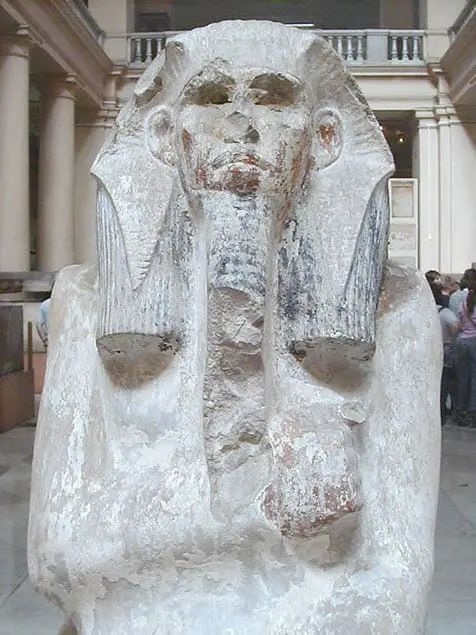
Source: Wikimedia Common
King Djoser, also known as Netjerikhet, reigned over Egypt during the Third Dynasty of the Old Kingdom. He was the first Pharaoh to reside only in Memphis despite moving to different places.
Djoser’s popularity revolves around two reasons, firstly saving Egypt from a seven-year-long famine by reconstructing the Temple of Khnum. Secondly, for his mortuary memorial at Saqqara, the Step Pyramid in which Djoser was buried.
The pyramid was built with stone bricks as opposed to mud bricks. King Djoser’s political and economic stability can be dictated by the fact that he could end famine and build such a massive monument.
1. Hatshepsut
Reign: 1478 – 1458 BC
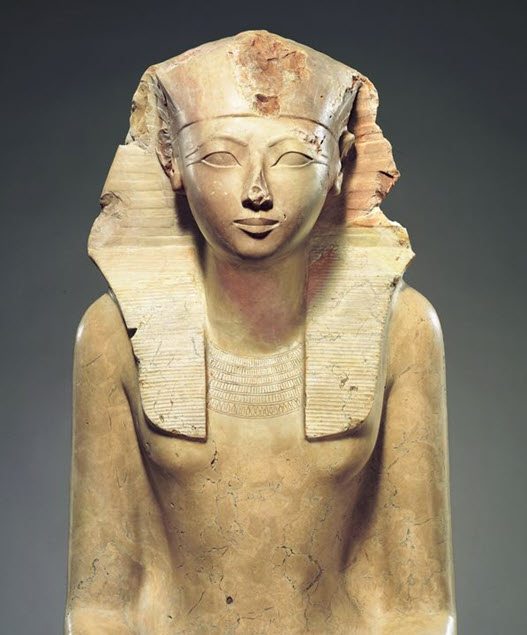
Source: Wikimedia Common
Hatshepsut, also known as Maatkare, was born in 1508 BC and is the second confirmed Pharaoh. She governed Egypt in the 18th Dynasty, the first royal dynasty of the New Kingdom (1550 – 1077 BCE).
Hatshepsut’s image in sculptures portrays that she inherited a masculine look, with a false beard and shaved head. She was not the first female Pharaoh but was one of Egypt’s most fabulous queens, and the greatest pharaohs ever lived.
She was widely known for two accomplishments, one for taking over several construction projects including the famous mortuary temple at Deir-el-Bahri, and the other for initiating broad trading networks.
She considered herself the God of the sun and, in 1493, took over to be the Queen of Egypt.
Unfortunately, during her 22nd year of reign, she suffered from arthritis and had diabetes, partly because she was overweight. She died in 1458 BC and was buried in the royal tomb KV20. The tomb was amongst the earliest tombs built in the Valley of the Kings, alongside her father, Thutmose I.
Conclusion
Narmer, also known as Menes, was the first Pharaoh by several pundits. He was the first ruler who contributed to the upper and lower class unification, giving the pharaohs the title “lord of two lands.”
It has been discovered that after the death of the Pharaohs, they were buried in a tomb full of wealth as it was believed that they would carry that wealth to their afterlife.
These tombs have provided enormous valuable knowledge to the current world about ancient Egyptian society.
